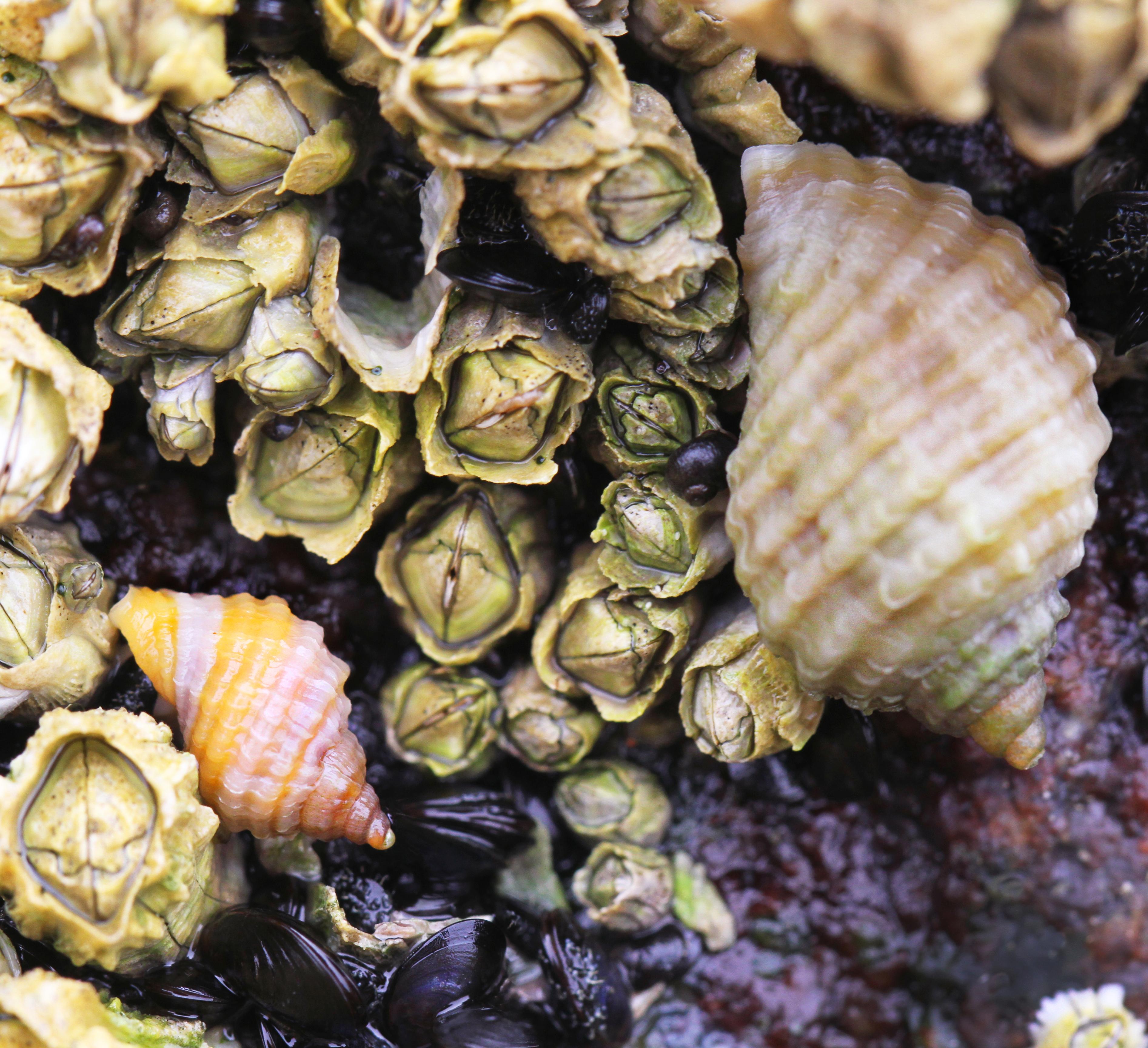Predators effect on food webs - apart from the eating thing.
Submitted by editor on 8 March 2016. Get the paper!
Get the paper!Animals must eat to survive, but they must also avoid being eaten by their predators. Unfortunately, the act of eating can make an individual vulnerable to predators, so animals often shift where, when, or how much they eat in order to remain safe. In their new paper “Resource levels and prey state influence antipredator behavior and the strength of nonconsumptive predator effects,” Matassa and colleagues show that marine snails reduce their feeding rates and avoid risky habitats if there is a predatory crab nearby or if risky habitats are not profitable (low food availability). As a consequence, barnacles, the snail’s food, benefit from the presence of a crab, an example of a risk-driven trophic cascade. Matassa et al.’s experiment demonstrates that these benefits increase with increases in either the abundance of barnacles or the size/age of snails. Their results indicate that the ecological consequences of predators scaring prey may be more pronounced in systems with abundant food and that the demographic composition of prey populations can shape trophic cascades driven by predation risk.

Two snails (Nucella lapillus) forage on barnacles (Semibalanus balanoides) in the rocky intertidal zone. In their study, “Resource levels and prey state influence antipredator behavior and the strength of nonconsumptive predator effects,” Matassa and colleagues examine how barnacle abundance affects the responses of juvenile and larger, sub-adult snails to predatory risk cues from the green crab (Carcinus maenas).